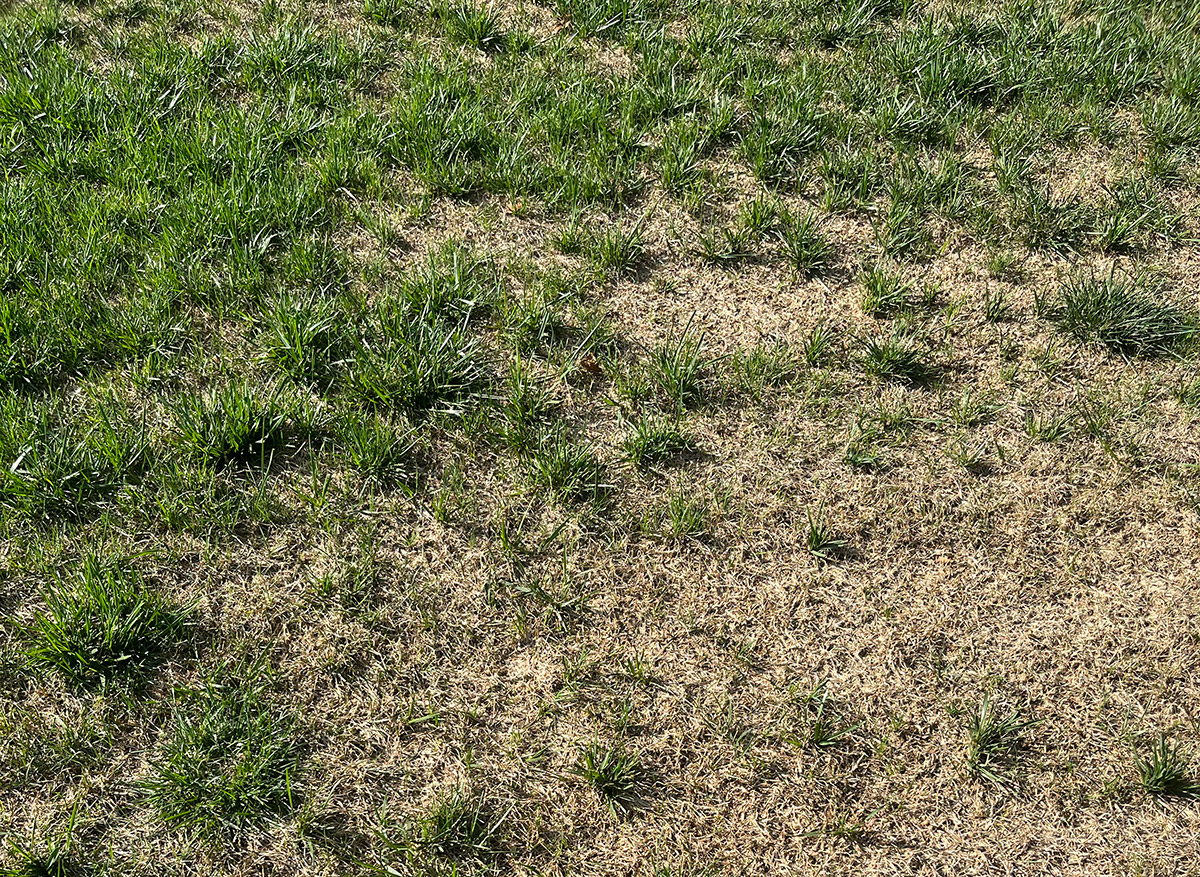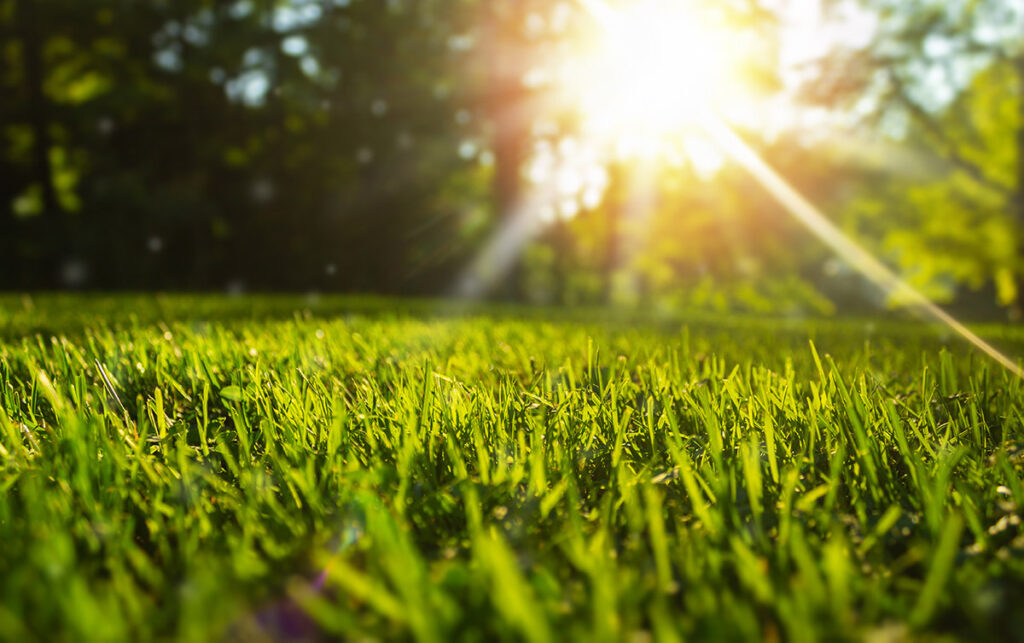
Brown patches on your lawn can be frustrating and unsightly, especially when you’re not sure why they’re there. At JHL Turf Pros, we help you identify the root cause and treat it effectively—so you can get back to enjoying a thick, green lawn. Let’s explore the common causes and how to prevent brown patch from returning.
Common Signs of Brown Patch Lawn Disease
Brown patch lawn disease is one of the most common turf problems faced by homeowners. It typically shows up as circular or irregular brown areas ranging from a few inches to several feet in diameter. These spots may grow rapidly and are often surrounded by a “smoke ring”—a thin, dark border marking the edge of the patch.
Affected grass blades may appear sunken, shriveled, or water-soaked. The damage is most noticeable during extended periods of hot, humid weather, especially in the early morning when dew is present. If you notice these symptoms, particularly in season grasses like tall fescue, it’s a clear indication that brown patch lawn disease may be at work.
What Causes Brown Patches on Lawns?
Brown patches on lawn areas typically result from a combination of environmental stress and poor turf management. The most common cause is a fungal disease known as Rhizoctonia, which thrives in hot, humid conditions, especially after extended periods of wet weather.
Excessive nitrogen applications during warm seasons can feed the fungus, making your lawn more susceptible. Likewise, overwatering or poor drainage can keep the thatch layer moist, creating an ideal environment for disease to spread. Soil compaction also plays a role by limiting air and water movement, which weakens your turf’s natural defenses.
Other contributing factors include mowing with dull blades or cutting the grass too short. Both stress the grass and expose it to fungal infection. Understanding your lawn’s grass type can help you make better care decisions and reduce compaction and other risk factors.

How Grass Type Affects Brown Patch
Your lawn’s grass type significantly influences how it responds to brown patch. Cool-season grasses, such as tall fescue, are particularly vulnerable during hot summer months. These season grasses struggle when temperatures rise, making them more likely to develop brown patches.
Warm-season grasses are generally more heat-tolerant but may still experience stress. While they might not develop classic brown patch lawn disease, they can display symptoms like patchy dormancy or minor discoloration.
Identifying your grass type is essential to choosing the right maintenance strategy. A targeted lawn care approach based on grass type can improve resilience and help maintain a vibrant, green lawn—even during challenging weather.
How to Prevent Brown Patch Lawn Disease
Prevention is the best strategy when dealing with brown patch lawn disease. Start by watering your lawn deeply, but only in the early morning to reduce excess moisture on the grass blades during humid weather.
Avoid fertilizing with excessive nitrogen, especially during warm, wet periods when the risk of fungus is high. Regularly dethatch your lawn to break up the thatch layer and aerate the soil to reduce compaction. Improving airflow through strategic pruning around your lawn also helps create less favorable conditions for fungal growth.
Maintaining the proper mowing height is equally important—never cut more than one-third of the grass blade at a time. These small but effective practices can go a long way in helping prevent brown patch and keep your lawn lush and green.
Repairing Brown Patches in Your Lawn
If your lawn develops brown patches, timely repair can make all the difference. Start by removing dead grass and loosening the topsoil in affected areas. This helps new grass roots establish more easily.
Next, reseed using a grass variety suited to your region and lawn usage. For example, tall fescue works well in many cool-season regions. After seeding, apply a light topdressing of compost or quality soil to promote germination.
Keep the area moist until new grass blades emerge and take root. Repairing areas ranging from a few inches to several feet in diameter requires patience, but with proper care, you’ll be on your way to a fuller, greener lawn—free of disease.

When to Call a Professional
If your lawn continues to develop brown patches despite your best efforts, it may be time to call in a professional. Persistent issues may stem from deeper problems like fungal infection, grub damage, or even pet-related stress that are difficult to identify without expert help.
A lawn care professional can accurately diagnose the cause—whether it’s brown patch lawn disease or another issue—and provide targeted treatment such as fungicide applications. At JHL Turf Pros, we offer comprehensive evaluations and custom lawn care plans to restore your lawn to a healthy, green state.
Trust JHL Turf Pros for Lawn Disease Solutions
At JHL Turf Pros, we understand how frustrating brown patches on lawn surfaces can be. That’s why we specialize in diagnosing and treating turf diseases with precision. Whether you’re dealing with cool or warm season grasses, our expert team tailors each solution to your specific grass type and lawn conditions.
From reducing compaction to proper fertilization, we provide the tools and knowledge to help your lawn thrive. Let us help you restore and protect your green lawn—season after season.
Request a Lawn Evaluation Today
Ready to eliminate brown patches and enjoy a healthy, green lawn again? JHL Turf Pros can help you restore your lawn with expert treatment and prevention. Reach out today to schedule your free evaluation and get back to loving your lawn.
